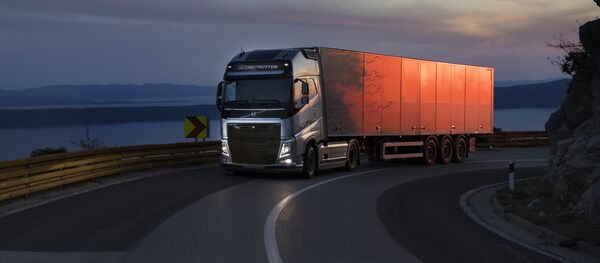"Our cars already have enough equipment required for automated driving, and now we are taking the most out of them with software technology," VTT project manager Matti Kutila said in a statement.
Using cameras, radars and sensors for observing people and animals and scanning surroundings, Marilyn and its "spouse" Martti are able to exchange information with each other. Furthermore, GPS/GLONASS are used for navigation, while data from sensors is being processed by intelligence that enables the cars to roll forward as planned.
Robot car Martti checking out Marilyn #vttmarilyn #robotcar #trafficlab pic.twitter.com/82X86JY1a3
— Liikennelabra (@Liikennelabra) 18 мая 2017 г.
At present, both vehicles are still reliant on visible road markings, but are expected to be able to handle gravel roads and even snow-covered roads in wintertime by 2020. Later this year, the robotic car couple will be able to communicate using public digital infrastructure.
"The communications channel of the automated cars is open, but the messages are not yet fully compliant with the standards," Kutila explained. "Come autumn, the cars will exchange information in a standard format, also allowing others to talk with them."
However, the project is far from over and is basically entering the most critical phase, which is needed to improve their intelligence.
Today we introduced the #robotcar #VTTMarilyn developed by #VTTpeople. @VTTFinland #technology #innovation #coolstuff pic.twitter.com/04Ys8vv8RF
— Katri Kääriä (@katrikaaria) 18 мая 2017 г.
"Today, the automation of traffic is generally speaking just taking its first steps — the big things will not come until 2021 and later," Kutila pointed out, venturing that robotics was more of a "never-ending story."
There she is #VTTMarilyn #robotcar — want to take a ride? @VTTFinland pic.twitter.com/PFu4lFSvFQ
— Henna Paakinaho (@HPaakinaho) 18 мая 2017 г.
Finland does not conceal its ambitions to become a world leader in automated cars.
In 2016, the Finnish capital Helsinki became one of the world's first test areas for self-driving buses, as a pair of driverless EZ10s hit the road. This was made possible by a loophole in Finnish law, where vehicles are not required to have a driver.
Aug 16th-Pilot Opening Ceremony w/ Helsinki Deputy Mayor Mr. Pekka! #SOHJOA @Automatedbus — Copyright Metropolia UAS pic.twitter.com/Vc09Kq6nK5
— EasyMile (@Easy_Mile) 10 августа 2016 г.
Finnish roads are known to be among the world's safest, yet automation was forecast to make traffic more fluent and drastically improve safety. According to an estimate by robotics specialist Kirsi Miettinen of the Finnish Transport Ministry, up to 90 percent of today's traffic accidents are caused by human error.
Never miss a story again — sign up to our Telegram channel and we'll keep you up to speed!



